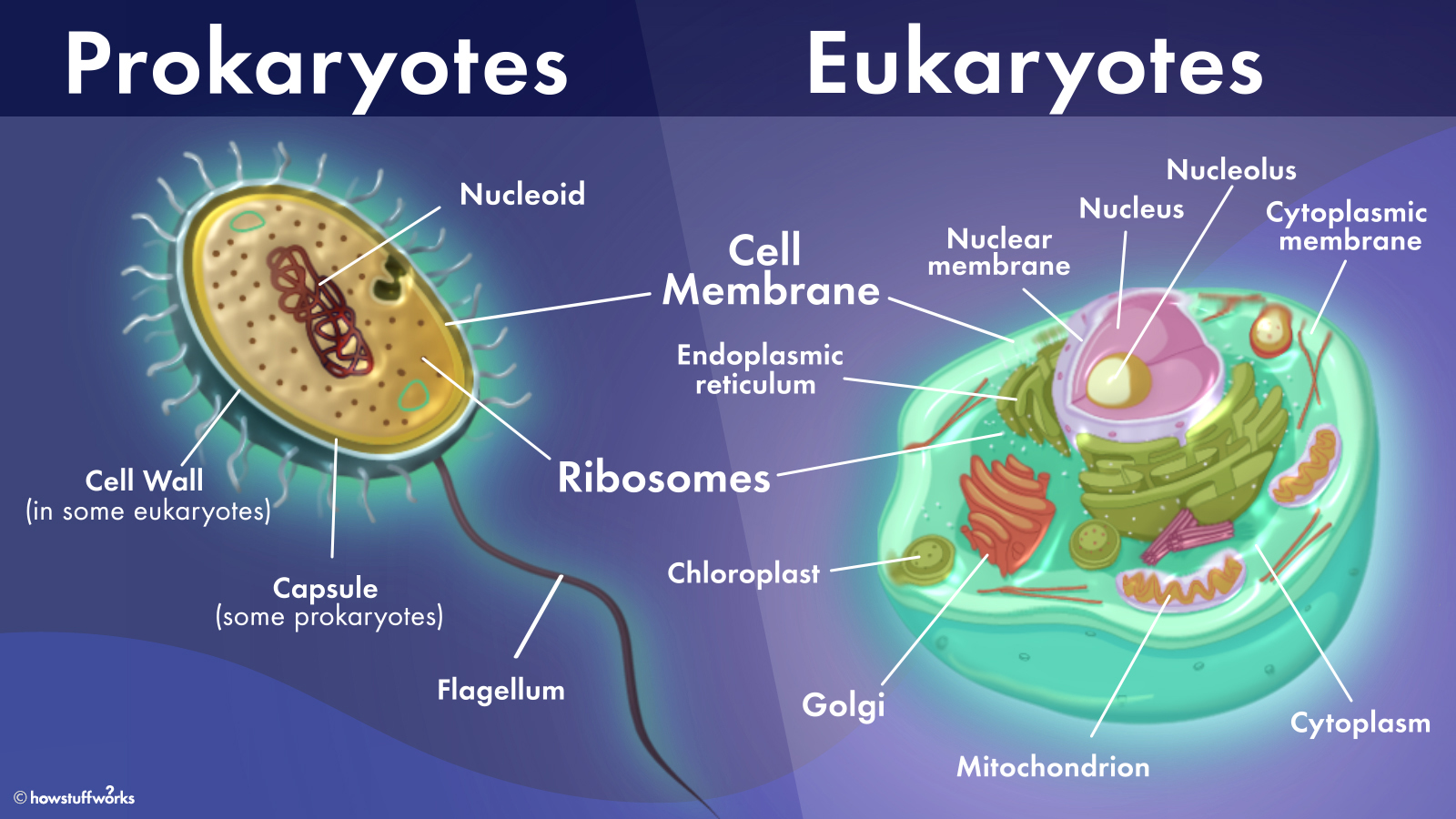Prokaryotic cells are much smaller than eukaryotic cells have no nucleus and lack organelles. Being or characteristic of a prokaryote.
Prokaryotic Cell Definition Examples Structure Biology Dictionary
Prokaryotes are single-celled organisms belonging to the domains Bacteria and Archaea.

8 what does prokaryotic mean. An additional circular piece of DNA called a plasmid used to transfer. Bacteria are among the best-known prokaryotic organisms. Prokaryotes are unicellular organisms that consist of a single prokaryotic cell.
These organisms belong to domain Prokarya. A jelly-like material that contains dissolved nutrients salts and structures called organelles. Animals plants fungi and protists are all eukaryotes eu means trueand are made up of eukaryotic cells.
Bacterium are still the most abundant organisms on Earth. 04062020 A prokaryotic cell can be defined as a cell which does not have a well-defined nucleus or membrane-bound organelles such as mitochondria or and lysosomes. 16082017 In prokaryotic cells the true nucleus is absent moreover membrane-bound organelles are present only in eukaryotic cells.
Other major differences between prokaryotic and eukaryotic cells are that prokaryotic cells are exclusively unicellular while the same does not apply to eukaryotic cells. The lack of internal membranes in prokaryotes distinguishes them from eukaryotes. Prokaryotes are unicellular organisms that lack organelles or other internal membrane-bound structures.
That means that they have a single chromosome and no nucleus but instead they have nucleoid a circular container that has double-stranded DNA. A prokaryotic cell structure is as follows. Contains genetic material which the.
Only the single-celled organisms of the domains Bacteria and Archaea are classified as prokaryotes pro means before and kary means nucleus. Even though life is much more diverse on Earth today bacteria singular. Prokaryotes have features such as.
Capsule It is an outer protective covering found in the bacterial cells in addition to the cell wall. Therefore they do not have a nucleus but instead generally have a single chromosome. An organism with a prokaryotic cell is called a prokaryote and they are generally bacterias.
Prokaryote also spelled procaryote any organism that lacks a distinct nucleus and other organelles due to the absence of internal membranes. A single loop of DNA free in the cytoplasm. Recall that prokaryotes are single-celled organisms that.
It is where many of the chemical reactions happen. 23022011 I tend to think that prokaryote and eukaryote are general terms for different ways cell are structured with eukaryotes having compartments completely enclosed by membranes and prokaryotes lacking such compartments although recognizing that some certainly at least have partial compartments. 30102019 Prokaryotes are single-celled organisms that are the earliest and most primitive forms of life on earth.
Prokaryotic cells are simple cells that do not have a true nucleus or other cell organelles. 29092019 Prokaryotes are single-cell organisms unicellular which do not contain organelles or any internal membrane structures. Many also have.
As organized in the Three Domain System prokaryotes include bacteria and archaeans. All prokaryotic cells are encased by a cell wall. Although most bacteria cause diseases some are beneficial.
Organisms within the domains Bacteria and Archaea are based on the prokaryotic cell while all other forms of life are eukaryotic. See all videos for this article. 18122016 A prokaryotic cell is a type of cell that does not have a true nucleus or membrane-bound organelles.
However organisms with prokaryotic cells are very abundant and make up much of Earths biomass. Most prokaryotes have a cell wall outside the plasma membrane. A prokaryotic cell does not have a nuclear membrane.
All cells fall into one of these two broad categories. Prokaryotes can be contrasted with eukaryotes which have more complex eukaryotic cells with a nucleus. Some prokaryotes such as cyanobacteria are photosynthetic organisms and are capable of photosynthesis.
A piece of circular double-stranded DNA located in an area of the cell called the nucleoid. They may be spherical rod-shaped or spiral. Bacteria and Archaea are the two domains of life that are prokaryotes.
However the genetic material is present in a region in the cytoplasm known as the nucleoid. Prokaryotic definition is - of relating to or being a typically unicellular organism as of the domains Bacteria and Archaea lacking a distinct nucleus and membrane-bound organelles.
Prokaryotic Cells Introduction And Structure Post 16 Biology A Level Pre U Ib Ap Bio Youtube
47 Differences Between Prokaryotes And Eukaryotes
Prokaryote Structure Article Khan Academy
Prokaryotic Cells Article Cells Khan Academy
Https Encrypted Tbn0 Gstatic Com Images Q Tbn And9gctyff Iibghc3dywuuh0lp54eyit6i99sgsqfarfwotss0tf2oo Usqp Cau
Prokaryotic And Eukaryotic Cells Cell Structure And Functions Class 8
A Schematic Diagram Of A Prokaryotic Cell Source 1 Download Scientific Diagram
10 13 14 Starter Name 3 Differences Between Prokaryotic Cells And Eukaryotic Cells On Next Slide 10 13 2014 Eukaryotic And Prokaryotic Cells Ppt Download

0 comments:
Post a Comment